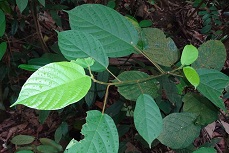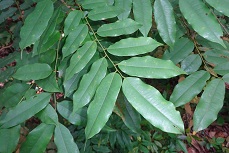| Home | Nature Weekly Index |
29 November 2015 | Field Trip | Lower Peirce Reservoir Park |
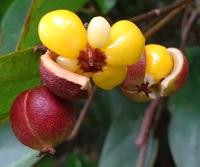 I headed down to the Lower Peirce Reservoir Park last Saturday morning. When I checked back my record, the last time I set foot in
this area was 4 years back in the November month as well. That was the time where I first saw the enclosed fruit of
Baccaurea bracteata hanging on its tree. It took me some years to figure
out the identity of this tree despite having the picture of the fruits. At this visit, I finally got to see its opened bright yellow
fruits that looked like a flower from a distance. Indeed, when I first saw pictures of the yellow fruits taken by others, I had
always thought that it was the flowers.
I headed down to the Lower Peirce Reservoir Park last Saturday morning. When I checked back my record, the last time I set foot in
this area was 4 years back in the November month as well. That was the time where I first saw the enclosed fruit of
Baccaurea bracteata hanging on its tree. It took me some years to figure
out the identity of this tree despite having the picture of the fruits. At this visit, I finally got to see its opened bright yellow
fruits that looked like a flower from a distance. Indeed, when I first saw pictures of the yellow fruits taken by others, I had
always thought that it was the flowers.

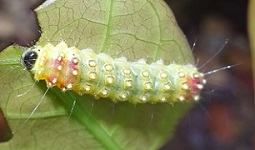 Along the boardwalk, I caught sight of 2 mid-size caterpillars munching away on leaves at 2 separate locations. From their
appearance, both were likely to be moth caterpillars. One was feeding on the leaf of a climber,
Indorouchera griffithiana while the other one was feeding on the leaf
of an unknown treelet, which I suspected might be Elaeocarpus floribundus.
Along the boardwalk, I caught sight of 2 mid-size caterpillars munching away on leaves at 2 separate locations. From their
appearance, both were likely to be moth caterpillars. One was feeding on the leaf of a climber,
Indorouchera griffithiana while the other one was feeding on the leaf
of an unknown treelet, which I suspected might be Elaeocarpus floribundus.
Below were some pictures of the suspected Elaeocarpus floribundus treelet. The young leaves of the plant were red and gradually turned yellowish-green as they matured. There seemed to be 2 tiny glands on the leaf stalk near the base of the leaf.
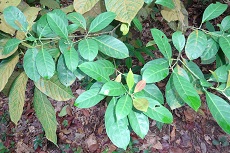
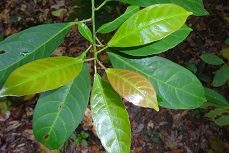

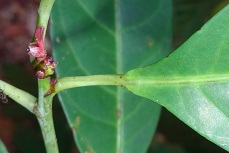
Before getting to this treelet, I saw an unknown tree that I suspected to be another Elaeocarpus species. My guess was Elaeocarpus pedunculatus. There was a few bundles of young flower buds at the end of some branches. However, viewing them for details was not possible since they were high up on the tree.


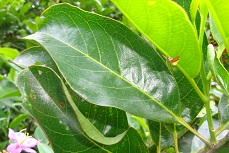

Though I was not able to confirm the identity of the 2 unknown plants above, the search on the Elaeocarpus species did lead me to identify a third species from the same genus, Elaeocarpus nitidus. The Elaeocarpus nitidus tree was seen was located at Upper Seletar Reservoir area in October last year. I only had pictures of its fruits and dried leaves that fell to ground as well as some distanced shots of the leaves on the high branches.
There were at least 4 unknown plants (pictures below), mainly young ones that I had yet to find any lead to their identity.
Update: 17 July 2016
The unknown plant in the far right is likely to be the young plant of a Kempas tree (Koompassia malaccensis).
